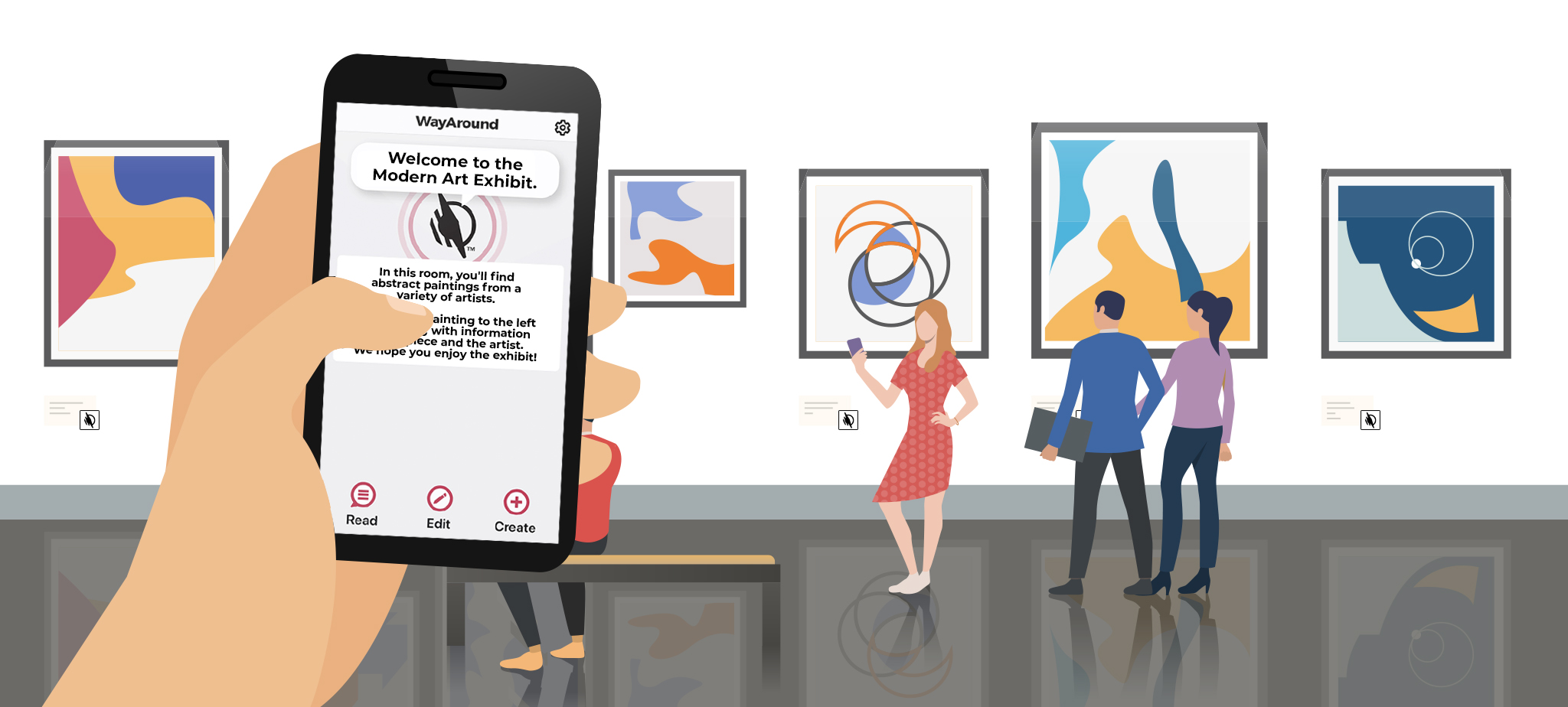WayAround can boost accessibility in a multitude of settings – including art exhibits and cultural centers.
In June 2019, we installed WayAround for Public Spaces at the “Ways of Seeing” exhibit at Gallery CA in Baltimore. Ways of Seeing was co-curated by Anil Lewis of the National Federation of the Blind and Sarah McCann. The curators worked with both blind and sighted artists who provided original work for the exhibit. Artists were asked to create interactive work that could be “seen” through all five senses. Thanks to the creativity of the artists, the exhibit was a tremendous success. We’re proud to say WayAround for Public Spaces complemented the exhibit’s signage, helping visitors discover each piece as the artists intended. From June 7 to July 20, 2019, viewers interacted with the pieces in the exhibit, exploring each piece using different senses.
Visitors and curators saw firsthand how WayAround could:

Allow artists to share detailed information about each piece in their own words.

Help visitors discover more about any piece in an unobtrusive way.

Inform and educate sighted and blind viewers.

Make any museum or art exhibit as accessible and inclusive as possible.
How WayAround Helped
At the exhibit, print and braille signage appeared next to each piece. The signage listed the name of the artist, the title of the piece, the medium, and a brief artist statement.
WayTags were placed on the upper right-hand corner of each sign. A viewer could walk up and scan the unobtrusive WayTag with an iOS or Android smartphone to receive information about each piece.
The WayAround app immediately delivered more information about the piece than is available on signage. With a simple tap of a smartphone, viewers received a description of the artwork, a biography of the artist, and a statement from the artist, all according to their chosen accessibility settings.
Instead of carrying around a large binder with additional information about the art and artists or getting a very limited amount of information about a piece on the nearby signage, visitors used WayAround to receive additional information directly from the artist and curators.
Curators could customize the information they wanted to share. WayTags could easily be rewritten and edited.
Each WayTag also included orientation information, providing an overview of each multi-sensory piece:
This is Station 4. Station 4 consists of two pedestals with one sculpture on each. Look for an added sound element on the sculpture to your left. Touch the copper tape to activate the sounds.
The WayAround app displayed this information according to the user’s accessibility settings, including bold text or inverted colors. Users could also choose to have the information read out loud over the app using VoiceOver or TalkBack.
In fact, WayAround can even output information to a braille display, helping those who are deafblind engage with pieces in the exhibit.
With VoiceOver or TalkBack, users can quickly swipe through to hear only the pieces of information they want. They can skip the artist bio, for example, and immediately read a description of the piece.
Information was displayed in a consistent order on the app, allowing users to easily find the information they wanted about each piece.
Curators could edit the WayTag to display whatever information they wished to include, including information from the artists themselves.
Overall, WayAround provided a robust tool to help users discover each piece in a coherent and seamless way. WayAround also helped the gallery share the artists’ work with the world.
Both sighted and blind users used WayAround during the Ways of Seeing exhibit.
We were thrilled with the response we got to WayAround at the “Ways of Seeing” exhibit in Baltimore, Maryland. We would like to thank the hardworking, creative artists for their contributions, as well as the curators for their commitment to inclusivity and accessibility.
Customer Comments
What I have found really useful is how much info we included in the WayAround app. We also made braille labels of the artist statements, but there is so much more info available through the app. People seem delighted with the fact that they can scroll through to only listen to the parts they are interested in.
I could move to each station independently. It was also very nice to listen to the description and the artist statement before approaching an exhibit. I found that reading through exhibit information before touching it was very satisfying for me.
Want to learn how WayAround’s assistive technology can enhance your museum or art exhibit?
Contact Us

